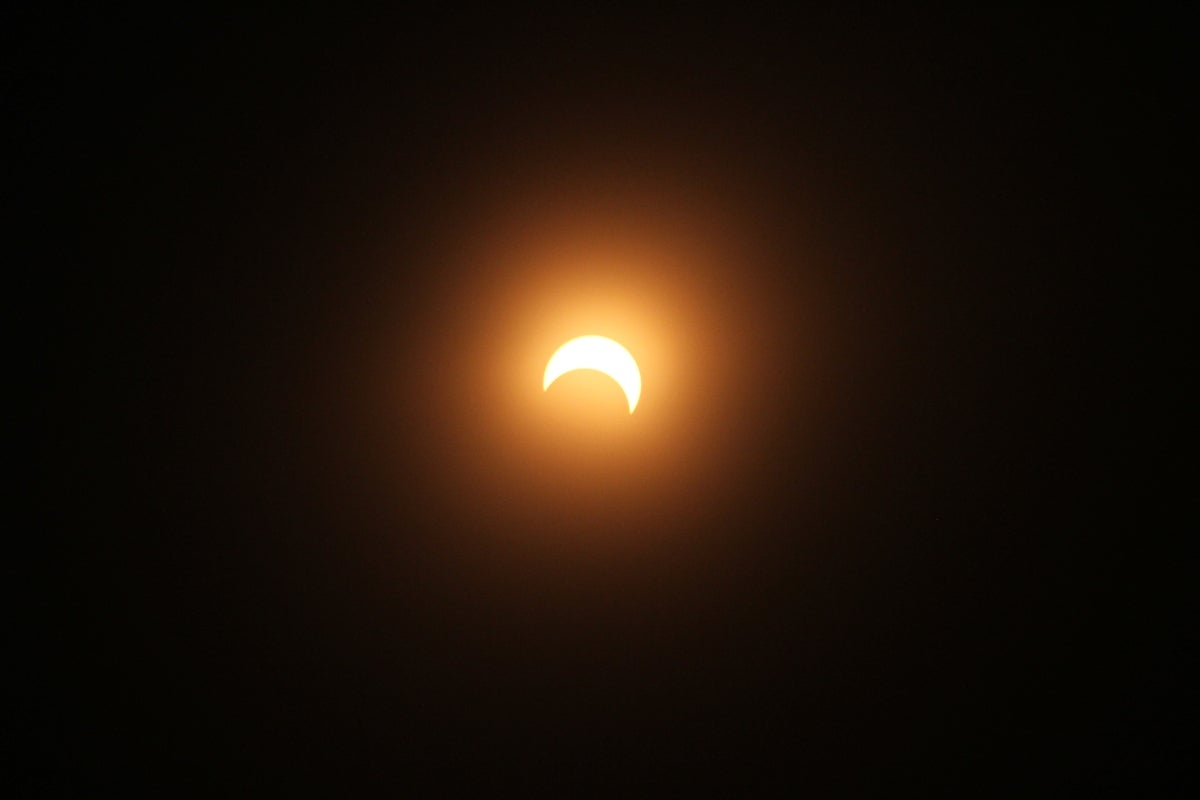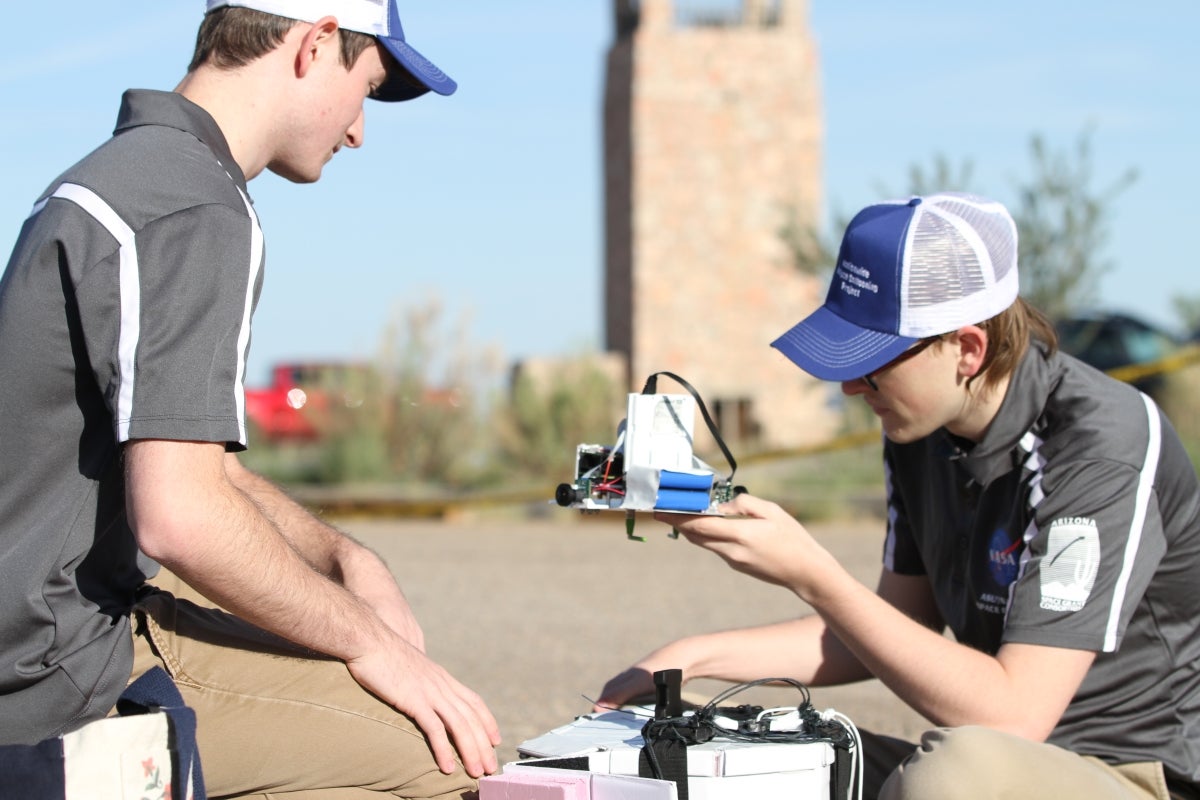ASU takes the lead in NASA Space Grant high-altitude ballooning project

Members of the Nationwide Eclipse Ballooning Project preparing for launch. Image courtesy NASA Space Grant Consortium
In 2022, Arizona State University students got the chance of a lifetime when ASU took the helm as the lead institution for the statewide team on the Nationwide Eclipse Ballooning Project (NEBP). The project, funded by NASA, aims to analyze atmospheric data during eclipses, which is collected via high-altitude balloon systems.
Last fall, ASU students traveled with the statewide team to Roswell, New Mexico, to launch their balloon during the Oct. 14, 2023, annular solar eclipse. The flight was successful but had a few missteps, which the team has been working to correct for the upcoming total solar eclipse on April 8, for which they will travel to Uvalde, Texas.
“We are excited to travel to Texas for this event. Our teams have worked very hard to prepare for this mission, and we have the added bonus of witnessing a total solar eclipse," said Thomas Sharp, associate director of the ASU/NASA Space Grant and a professor in ASU's School of Earth and Space Exploration, who directs the statewide team.
The generation of atmospheric gravity waves along the path of totality is of particular interest to the team. Various data, including temperature, pressure, wind speed and 3D video imagery, will be collected and analyzed through multiple payloads tethered to the balloon as it reaches altitudes between 60,000 and 90,000 feet. The data collected gets transmitted to ground stations, and the video is livestreamed on YouTube.
Students also gain hands-on experience launching, tracking and recovering high-altitude balloon systems. Launch and recovery locations are determined by making flight predictions up to a week before the launch, and students file for FAA approval for every flight. Students learn all aspects of balloon launch, including lift calculations, flight predictions, helium gas handling, and filling and launch procedures. The ground station team will track and control the system through the Iridium satellite system and receive data through a radio downlink. The team's system has a helium release valve and a cut-off system so that they can slow the balloon ascent rate during eclipse totality.
After the mission, the team will analyze the data and prepare to present a paper with their results at the Academic High Altitude Conference (AHAC), hosted by the Stratospheric Ballooning Association May 28–31 in Minneapolis/St. Paul, Minnesota.
The student team from ASU includes Jacqueline Do, project lead, Megan Miller, Imaan Ahmed, Emily Ottesen, Tyler Derrick, Everett Moore, Cristo Lopez, Ricardo Ontiveros, Muhammed Topiwala and Courtney Banks.
The University of Arizona, Embry Riddle Aeronautical University, Glendale Community College and Casa Grande Union High School are also participating in this project in collaboration with the Arizona Near Space Research (ANSR) team, a nonprofit organization coordinating balloon launches.
More Science and technology

Swarm science: Oral bacteria move in waves to spread and survive
Swarming behaviors appear everywhere in nature — from schools of fish darting in synchrony to locusts sweeping across landscapes in coordinated waves. On winter evenings, just before dusk, hundreds…

Stuck at the airport and we love it #not
Airports don’t bring out the best in people.Ten years ago, Ashwin Rajadesingan was traveling and had that thought. Today, he is an assistant professor at the University of Texas at Austin, but back…

ASU in position to accelerate collaboration between space, semiconductor industries
More than 200 academic, business and government leaders in the space industry converged in Tempe March 19–20 for the third annual Arizona Space Summit, a statewide effort designed to elevate…




